SURF FIT NEWS – No.3 by Clive Rodell
Continuing on the theme of getting ‘your house in order, before the renovations’ here’s some info on hip angle, with relation to back issues and associated problems.
I am not a Physio or Surgeon. But having worked with issues for many people over 30 plus years, I’ll do my best to explain the following;
Hip angle is generally referred to as ‘Pelvic Tilt’. Lower X syndrome is a term, also dealing with this.
Anterior pelvic tilt is normal in both males and females. Research tells us that 4 and 7 degrees of anterior rotation in males; 7 and 10 degrees in females, is the ‘norm’.
Realistically the tilt could sit outside these ranges in some people without problems. However, the tilt needs to be consistent with correct spinal alignment. If the tilt changes that alignment, that’s when we start to move into the area of back problems and other issues.
Increased Pelvic tilt forward, can result in extra lower back curve (Lordosis) or backwards tilt can result in Gluteal dysfunction (no derriere) , both these outcomes, and many others, cause serious issues over time. Asymmetrical tilts, either front/front or front/back can cause even more serious issues due to the rotation between upper and lower parts of the spine.
Let’s just say, for the purpose of the next few paragraphs, for you, the pelvic alignment of your hips should be X degrees, what happens if it’s not?
The human pelvis is made up of three ‘large’ bones — left side (left Ilium), right side (right Ilium) and the sacrum/coccyx portion. The upper leg connects to the pelvis at the hip socket. The bottom part of the spinal column (lumbar spine) connects at the top of the sacrum. Commonly we hear of people with L5/S1 issues (Lumbar vertebra 5, the last one, connecting to the Sacrum S1 or the S. I. joint (Sacroiliac). The left and the right side work like suspension/support structures. The SI joint is ‘glide joint’ allowing only a small amount of movement. It has to be a ‘tough mother’.
It’s a complicated, but strong joint, with minimal movement. The jury is still out as to why it causes certain issues. For me though, to say the SI joint causes issues, is a bit like the tyre on the car analogy. If I go to a Tyre Outlet and just say I have a worn tyre and pls replace it, I am ignoring the route cause perhaps. Steering misalignment causing the tyre wear, To replace the tyre is a short term fix, that doesn’t address the issues.
Another analogy might be the ‘Billy Cart’, if you don’t get those steering ropes and plank attached/moving/aligned properly, your heading for trouble! Your spinal health goes downhill! Lol.
So if we say the Billy Cart steering is attached to the ‘seat plank’ and back wheels, but is misaligned, then we will always have ‘wear/travel issues’ and are heading for a crash one day.
Imagine, the hips are your steering mechanism and your spine is the ‘backbone’ of the Billy Cart. Therefor Hip dysfunction or mis-alignment is going to distort the Backbone.
Let’s go back to our theoretical 7 degrees of hip tilt;
If the tilt is correct on both sides for you (remember they are independent), then the spine will sit straight and be aligned correctly (unless as the last article mentioned) there’s upper body mis-alignment.
Please look at the diagrams then a couple of simple suggested stretches, it would help for someone to show you the correct way. There’s a lot more to help re-alignment, but this article is just a start. I have scoured the web for the best images ( A thanks to Manchester-Bedford Muscoskeletal, Research Gate and a couple of anonymous ones, for the great images I found). I also used a photogenic client ??.
Obviously it’s a massive topic, but suffice it to say, it’s common for surfers to suffer this issue, it also greatly affects athletic performance, sleep, movement in general etc.
An incorrect training programme can not only aggravate these issues, but often cause them. Once again, I would choose a Trainer with at least ten years experience or more. Training for surfing is not about ‘training for surfing’, it’s about training each individual to surf better! That’s a totally different concept requiring a trainer with a lot of knowledge. Research your trainer or practitioner, forget the Instagram hard sell, ask colleagues and friends who have recovered from pain, who they consulted.
Good luck!
If you’re on the Northern Beaches of Sydney, or anywhere I might be giving a lecture/talk (I’ll be hanging at Bells again this year), I’d be happy to help.
Diagram 1. Exhibits Hip positions and some respective possibilities with changed spinal positions. .
Diagram 2 and 3 Exhibit Possible Nerve involvement/Affectation at various levels
Diagram 4 Pelvic Tilt
Diagram 5 and 6 are two more simple and effective stretching exercises
Diagram 7 This is an example of terrible technique masquerading as a Core exercise! Just look at the disastrous back curve.
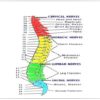
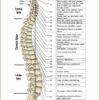
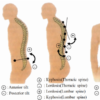
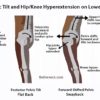
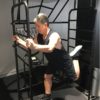
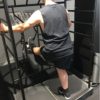
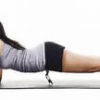
Recent Comments